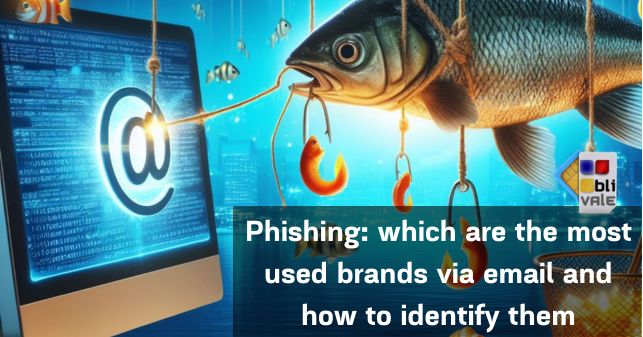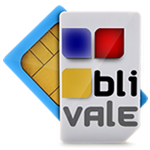The 10 most used and imitated brands for email phishing purposes, according to data from Check Point Research, are:
- Microsoft
- Amazon
- Apple
- Wells Fargo
- Home Depot
- PayPal
- Banks in general
These brands are often imitated because they are known and trusted, making them more likely to convince users to click on a malicious link or provide their credentials.
How to recognize a phishing email
Here are some signs that can help you recognize a phishing email:
- The email is generic or non-personalized. Hackers often send mass emails that are generic or non-personalized. If the email addresses you by name or contains information that only you should know, it is more likely to be authentic.
- The email contains grammatical or spelling errors. Hackers often make grammatical or spelling errors in their emails. If you notice errors in an email, it's a sign that it may be fake.
- The email contains a link or attachment. Hackers often use links or attachments to infect victims' computers with malware. If you are unsure of the origin of a link or attachment, it is best not to open it.
- The email asks for personal or financial information. Hackers often use phishing emails to collect personal or financial information, such as passwords, credit card numbers, or banking information. If an email asks you for this information, it's best not to provide it.
What not to do
If you receive an email that you think may be phishing, here's what you shouldn't do:
- Do not click on any links or open any attachments.
- Do not reply to the email.
- Do not provide any personal or financial information.
See image below on how to verify the link.
In this case we can say that we were amazed because it refers to our website, and therefore it would be sent from us to ourselves.
On the one hand we are pleased, as we are considered reliable, on the other we are not because our website and our email are used to send phishing emails.
The email as it was received
| Check the email by placing the mouse on the link
|
What to do
If you receive an email that you think may be phishing, here's what you should do:
- Delete the e-mail.
- Report the email to the legitimate sender.
- Report the email to your email service provider.
Examples
Here are some examples of phishing emails you may receive:
- An email from Microsoft warning you that your account has been hacked.
- An email from Amazon letting you know you have a pending order.
- An email from Google asking you to verify your identity.
- An email from a bank where you are almost certainly not a member asking you to verify your identity.
If you receive such an email, it is important not to click on any links or open any attachments. Instead, delete the email and report it to the legitimate sender.
Risks
If you click on a malicious link or provide your credentials to a fake website, you may be at risk:
- Your computer may be infected with malware.
- Your personal data could be stolen.
- You could lose money.
It is important to be aware of the danger of phishing emails and take steps to protect yourself.
Because antiviruses can't block them
Antiviruses fail to block phishing emails for several reasons:
- Phishing emails are often very similar to legitimate emails. Hackers use sophisticated techniques to create emails that appear to come from trusted sources. This makes it difficult for antiviruses to distinguish phishing emails from legitimate emails.
- Hackers are always looking for ways to bypass phishing filters. Antiviruses use a number of techniques to detect phishing emails, but hackers are always looking for ways to bypass these techniques.
- Phishing emails can be sent from a wide variety of IP addresses. This makes it difficult for antiviruses to block all phishing emails.
Antiviruses can help protect against phishing, but they are not foolproof. It is important to be aware of the danger of phishing emails and take steps to protect yourself, such as:
- Be cautious when receiving emails from unknown senders.
- Don't click links or open attachments in emails from unknown senders.
- Be skeptical of emails asking for personal or financial information.
- Use two-factor authentication to protect your online accounts.
Here are some specific tips for recognizing phishing emails:
- Check the sender's email address. If the email address does not match that of the legitimate sender, it is likely a phishing email.
- Check the contents of the email. If the email contains grammatical or spelling errors, it is likely a phishing email.
- If the email asks you to provide personal or financial information, don't do so. If you have any questions, please contact the legitimate sender directly.
Because email management providers can't block them
Email management providers fail to completely block phishing emails for several reasons.
- Phishing emails are often very similar to legitimate emails. Hackers use sophisticated techniques to create emails that appear to come from trusted sources. This makes it difficult for email management providers to distinguish phishing emails from legitimate emails.
- Hackers are always looking for ways to bypass phishing filters. Email management providers use a variety of techniques to detect phishing emails, but hackers are always looking for ways to bypass these techniques.
- Phishing emails can be sent from a wide variety of IP addresses. This makes it difficult for email management providers to block all phishing emails.
Email management providers use a number of techniques to try to block phishing emails, including:
- Checking the sender's email address. Email management providers can check the sender's email address to see if it matches that of a legitimate sender.
- Checking the content of the email. Email management providers can check the email content for words or phrases that are often used in phishing emails.
- Using AI-based filters. Email management providers can use AI-based filters to look for behavior patterns that are often associated with phishing emails.
These techniques can help block a certain number of phishing emails, but they cannot block them all. It is important to be aware of the danger of phishing emails and take steps to protect yourself, such as:
- Be cautious when receiving emails from unknown senders.
- Don't click links or open attachments in emails from unknown senders.
- Be skeptical of emails asking for personal or financial information.
- Use two-factor authentication to protect your online accounts.
Here are some specific tips for recognizing phishing emails:
- Check the sender's email address. If the email address does not match that of the legitimate sender, it is likely a phishing email.
- Check the contents of the email. If the email contains grammatical or spelling errors, it is likely a phishing email.
- If the email asks you to provide personal or financial information, don't do so. If you have any questions, please contact the legitimate sender directly.
Conclusion
If you receive an email that you think may be phishing, delete it immediately or check as per our example, without clicking: just go over the link and the phishing link appears which turns out to be different from the actual one.











